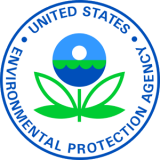EPA, Goodrum Farm CR314, LLC Reach Settlement on Clean Water Act Violations
07/18/2016
Contact Information:
Mark Hanson (hanson.mark@epa.gov)
913-551-7788
Environmental News
FOR IMMEDIATE RELEASE
 (Lenexa, Kan., July 18, 2016) - EPA Region 7 has reached a proposed administrative settlement with Goodrum Farm CR314, LLC, in Butler County, Mo., to resolve violations of Section 404 of the Clean Water Act (CWA). As part of the settlement, the company has agreed to pay a civil penalty of $15,000.
(Lenexa, Kan., July 18, 2016) - EPA Region 7 has reached a proposed administrative settlement with Goodrum Farm CR314, LLC, in Butler County, Mo., to resolve violations of Section 404 of the Clean Water Act (CWA). As part of the settlement, the company has agreed to pay a civil penalty of $15,000. During a July 16, 2014, inspection, U.S. Army Corps of Engineers (USACE) inspectors found the company had placed dredged and fill material into forested wetlands, in an effort to convert the wetlands to agricultural cropland. This resulted in the unauthorized impact of approximately 9.46 acres of wetlands adjacent to a designated “water of the United States.”
Under a previously issued administrative compliance order to address the CWA violations, Goodrum Farm CR314, LLC, mitigated the impacted wetland acres by placing approximately 35 acres of the property into a conservation easement, preventing further development, including future farming.
Under this proposed settlement, Goodrum Farm CR314, LLC, will pay a $15,000 penalty for its alleged Section 404 CWA violations.
Unpermitted destruction of wetland areas can create numerous environmental impacts, including degradation of watershed health, habitat loss, impacts to stream channel configuration, and decreased biological diversity. Wetland degradation also impedes a wetland’s abilities to absorb floodwaters and filter pollutants. Prior to conducting activities that may impact wetlands, streams, or rivers, landowners should consult with the USACE to determine if the planned activity is authorized under Section 404 of the CWA.
The Clean Water Act seeks to protect streams and wetlands that form the foundation of the nation’s water resources. Protecting streams and wetlands is also part of adapting to climate change impacts like drought, stronger storms, and warmer temperatures.
# # #